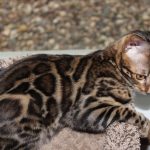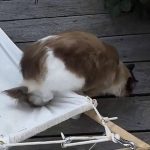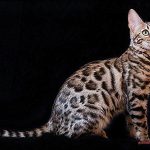We all love seeing our feline friends snuggled up and snoozing peacefully, but what happens when their sleep is interrupted by strange movements? Twitching, jerking, and convulsions are all abnormal behaviors that can leave pet owners feeling anxious and concerned. One of the most common questions pet parents have is whether these movements are a sign of a seizure in cats.
Seizures can be scary for both humans and animals alike, presenting in a variety of ways that can be difficult to distinguish from normal sleeping behavior. So how do you know if your cat’s twitching is something to worry about? In this blog post, we’ll explore the different types of seizures that cats can experience and determine if twitching during sleep is a seizure or simply part of their natural slumber.
But that’s not all – we’ll also delve into the potential causes of seizures in cats, as well as why it’s crucial to seek veterinary attention if you suspect your furry friend may be experiencing seizures. So sit back, relax, and let’s get to the bottom of this pressing question: is twitching in sleep a seizure in cats?
What is Twitching in Sleep?

While it may seem alarming, rest assured that twitching in sleep is a natural part of a feline’s slumber cycle.

Cats typically experience two stages of sleep – Rapid Eye Movement (REM) and Non-Rapid Eye Movement (NREM). During REM sleep, which is when cats are most likely to dream, they may twitch in their slumber. These twitches can range from subtle movements of their whiskers and paws, to more noticeable jerks of the entire body.
It’s important to note that twitching in sleep is not the same as a seizure. A seizure is caused by abnormal electrical activity in the brain and can result in serious health issues for cats. Twitching in sleep, on the other hand, is a normal behavior that does not cause any harm to your furry friend.
However, it’s important to be aware of any excessive or unusual twitching behavior. If you notice this happening with your cat, it could be a sign of an underlying medical condition. In these cases, it’s best to seek veterinary attention to rule out any potential health issues.
To differentiate between normal and abnormal twitching, observe your cat’s behavior during the episode. Normal twitching usually occurs during REM sleep and is often accompanied by other signs of deep sleep, such as relaxed muscles and slowed breathing. If your cat appears calm and peaceful during these episodes, it’s likely just part of their natural sleep cycle.
Are Seizures and Twitching the Same?
While they may seem alike, they are, in fact, two distinct occurrences.
Seizures are caused by sudden and uncontrolled electrical activity in the brain, resulting in a range of symptoms such as convulsions, muscle stiffness, loss of consciousness, and even vocalizations. Twitching during sleep, on the other hand, is a natural bodily movement that occurs only during the REM (rapid eye movement) stage of sleep.
During REM sleep, the body relaxes, and the brain sends signals to the muscles to move. Therefore, it is common to witness your cat’s paws twitching or their whiskers moving while they sleep. It’s important to know that twitching during sleep is harmless and does not require medical attention.
Seizures, on the other hand, can be a severe health concern for your cat. They can happen at any time and may necessitate medication or other medical interventions. Symptoms of seizures in cats include uncontrolled movements, drooling, loss of bowel or bladder control, and confusion.
It’s crucial to understand the difference between seizures and twitching during sleep as they require different treatments. If you suspect your cat is experiencing seizures, take them to a veterinarian immediately for proper diagnosis and treatment. However, if it’s just twitching during sleep, you can rest assured that it’s a natural occurrence and does not require medical attention.
Symptoms of a Seizure in Cats
Seizures in cats can manifest in a variety of ways, making it essential to familiarize yourself with the symptoms.
Some common signs that your cat may be experiencing a seizure include sudden muscle contractions or spasms, uncontrolled shaking, loss of consciousness, drooling, and vocalizations such as crying out or meowing. If you notice any of these symptoms, it’s crucial that you take your cat to a vet for a full examination and diagnosis.
It’s important to note that not all seizures in cats are caused by epilepsy. Underlying health conditions such as liver disease, kidney problems, brain tumors, or infections can also trigger seizures. Your vet may recommend blood tests, x-rays, CT scans, or an MRI to determine the root cause of your cat’s seizures.
It’s natural to feel overwhelmed when your cat is experiencing seizures. However, with proper diagnosis and treatment, many cats with seizures can go on to live happy and healthy lives. Treatment options may include medications to control seizures, changes in diet or lifestyle, or surgery to remove any underlying tumors or growths.
In addition to the symptoms mentioned above, other signs that your cat may be having a seizure include confusion or disorientation, staring into space, twitching of the eyes or facial muscles, and involuntary urination or defecation. It’s important to work closely with your vet to determine the best course of action for your individual cat.
Differentiating Between Normal Twitching and Abnormal Twitching
While this can be a cute and amusing sight, it’s essential to differentiate between normal twitching and abnormal twitching in cats. Understanding the difference can help determine if there are underlying medical conditions that require attention.
Normal twitching occurs during the rapid eye movement (REM) stage of sleep, which is a natural response for cats as they dream. These twitches are usually mild and do not cause any harm to your feline friend. However, abnormal twitching can be a sign of a seizure, which is a severe medical condition that requires immediate attention.
To differentiate between normal and abnormal twitching, it’s essential to observe your cat’s behavior during and after the episode. Normal twitching should not disrupt your cat’s sleep cycle, and they should go back to sleep soon after the twitching stops. However, if the twitching is prolonged and frequent or accompanied by other symptoms such as drooling or losing control of bladder or bowels, it could indicate a seizure.
Seizures can be caused by various factors such as trauma, infections, toxins, or genetic conditions. Therefore, it’s crucial to pay attention to your cat’s behavior during and after episodes to determine if there are underlying medical conditions that require attention. If you notice any abnormal twitching, it’s best to seek veterinary advice immediately.
Causes of Abnormal Twitching in Cats

However, it’s important to recognize when these twitches are abnormal and could be a sign of an underlying medical condition. There are a range of potential causes of abnormal twitching in cats, and as an expert in the field, I have compiled research notes to help you understand them all.
One common cause of abnormal twitching in cats is stress and anxiety. Just like us humans, cats can become anxious or stressed due to changes in their environment or routine. This tension can manifest itself in involuntary muscle movements, including twitching during sleep.
Neurological disorders are another potential cause of abnormal twitching in cats. These disorders can affect the central nervous system and cause involuntary muscle movements. Epilepsy, for example, is a neurological disorder that can cause seizures, including those that occur during sleep.
Infectious diseases such as feline distemper or toxoplasmosis can also lead to abnormal twitching in cats. These diseases can affect the nervous system and cause involuntary muscle movements during sleep.
Other possible causes of abnormal twitching in cats include nutritional deficiencies, medication side effects, and toxin exposure. It’s essential to consult with a veterinarian if your cat is experiencing abnormal twitching or any other unusual symptoms to get a proper diagnosis and treatment plan.
How to Monitor Your Cat’s Twitching Behavior
Twitching in cats is a common occurrence during their sleep, but it can be difficult to distinguish between regular twitching and seizure-like activity. Seizures in cats can be caused by various underlying medical conditions such as epilepsy, brain tumors, or infections. Therefore, it is crucial for cat owners to monitor their feline’s twitching behavior to determine whether it is just normal muscle movements or a potential seizure.
To start monitoring your cat’s twitching behavior, you should first observe their sleeping patterns. Take note of how often they twitch during their sleep and whether there are any changes in the frequency or duration of the twitching. It is also important to observe your cat’s behavior after they wake up from their nap. Do they seem disoriented or confused? Are they having trouble walking or standing up? These symptoms could indicate that your cat has had a seizure.
Keeping a journal or log of your cat’s episodes is another way to monitor their twitching behavior. Record the date, time, and duration of each episode, as well as any other symptoms that may be present such as drooling or loss of consciousness. This information can be helpful when discussing your cat’s condition with a veterinarian.
Setting up a camera to monitor your cat’s behavior while you are away from home can also be beneficial in detecting potential seizure activity that may occur when you are not around. This can help you identify any patterns or triggers that may be causing the twitching.
If you notice any concerning symptoms or changes in behavior, seek veterinary attention immediately. Your vet may recommend further testing such as blood work or an MRI to determine the underlying cause of your cat’s seizures.
When to Seek Veterinary Attention
However, it can be challenging to determine when to seek veterinary attention when your cat is twitching in sleep. Although it may seem like a harmless and common occurrence, it could be a sign of a seizure, which can be life-threatening if left untreated.
Seizures in cats can be caused by various factors such as epilepsy, brain tumors, kidney disease, and more. Therefore, it is crucial to pay close attention to your cat’s behavior and movements during sleep. If you notice any unusual behavior or movements, it’s essential to contact your veterinarian immediately.
Here are some key sub-topics and lists to keep in mind when determining when to seek veterinary attention:

– Signs of seizures: Apart from twitching during sleep, other signs of seizures in cats may include drooling, loss of consciousness, muscle tremors or convulsions, and abnormal behavior. If you notice any of these symptoms in your cat, seek veterinary attention immediately.
– Underlying health conditions: Seizures can be life-threatening and require immediate medical intervention. Your veterinarian may recommend further testing and monitoring to determine the cause of the twitching and rule out any underlying health conditions.
– Err on the side of caution: As a responsible pet owner, it’s always better to be cautious than sorry. If you have any concerns about your cat’s behavior or movements during sleep or otherwise, don’t hesitate to contact your veterinarian for guidance and support.
Treating Seizures in Cats
These neurological episodes can be caused by various factors such as head trauma, liver disease, kidney disease, brain tumors, or even genetic predisposition. It is crucial to identify the root cause of seizures in cats before beginning any treatment.
Medication is the most common treatment for seizures in cats. Veterinarians often prescribe anticonvulsant drugs like phenobarbital and potassium bromide to control these episodes by reducing abnormal electrical activity in the brain. However, these medications come with their own set of side effects such as increased thirst and appetite, lethargy, and liver damage. As a pet owner, it’s essential to monitor your cat closely while on medication.
Apart from medication, dietary changes can also help manage seizures in cats. A ketogenic diet, which is low in carbohydrates and high in fat and protein, has shown positive results in reducing the frequency and severity of seizures in cats. However, it’s critical to discuss any dietary changes with your veterinarian before implementing them.
Acupuncture is another alternative treatment that can be beneficial for cats experiencing seizures. This therapy involves inserting small needles into specific points on the cat’s body to stimulate the nervous system and promote healing. Studies have shown that acupuncture can help reduce the frequency and intensity of seizures in cats.
In severe cases where a brain tumor is causing seizures, surgery may be necessary. However, surgery is a risky and expensive option that should only be considered as a last resort.
7slOGJbFfp0″ >
Conclusion
In summary, while twitching during sleep is a common occurrence for cats, it’s important to differentiate between normal and abnormal behavior. Normal twitching occurs during the REM stage of sleep and is harmless, often accompanied by signs of deep relaxation such as slowed breathing and relaxed muscles. However, excessive or unusual twitching could be a sign of an underlying medical condition that requires veterinary attention.
It’s crucial to understand the difference between seizures and twitching during sleep as they require different treatments. Seizures in cats can manifest in various ways, including sudden muscle contractions, uncontrolled shaking, loss of consciousness, drooling, and vocalizations such as crying out or meowing. If you suspect your cat is experiencing seizures, take them to a veterinarian immediately for proper diagnosis and treatment.
On the other hand, if it’s just normal twitching during sleep, there’s no need to worry as it doesn’t require medical attention. However, monitoring your cat’s behavior during episodes can help determine whether it’s normal muscle movements or potential seizure activity that requires veterinary attention.
In conclusion, understanding your cat’s behavior is vital in ensuring their overall health and well-being. By recognizing the difference between normal twitching during sleep and abnormal seizure activity, you can provide your feline friend with the best care possible.







